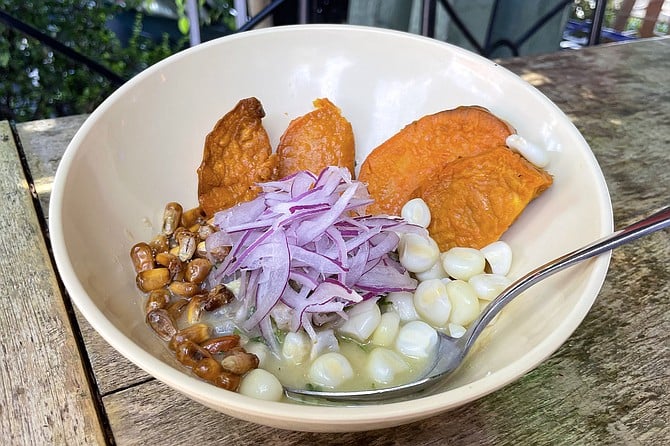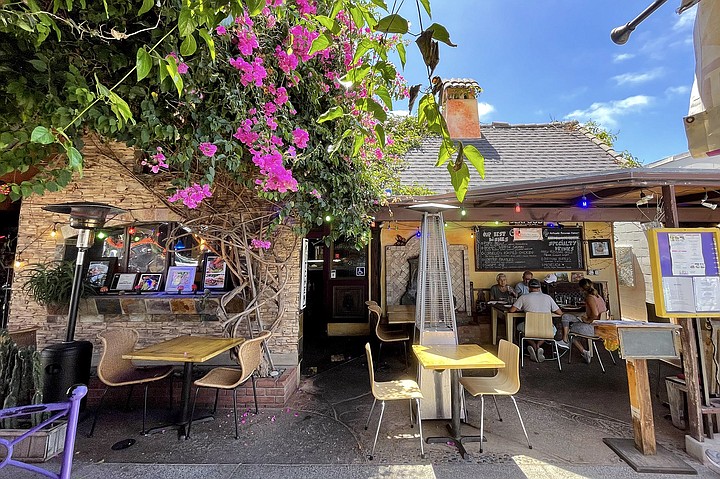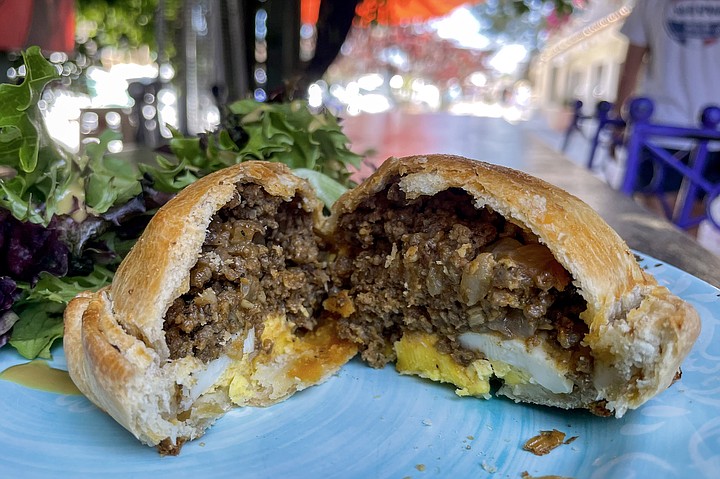 Facebook
Facebook
 X
X
 Instagram
Instagram
 TikTok
TikTok
 Youtube
Youtube

It’s not the ceviche we’re most accustomed to seeing around these parts. Most of the ceviche in San Diego draws its influence from a Mexican variation: citrus-cured seafood served with a tostada or tortilla chips, with diced onions, peppers, maybe sliced cucumbers or avocado. My mouth waters merely typing these words, so well-conditioned has it been by local mariscos trucks and counters.
However, there’s another, older ceviche tradition, and there’s easy rule of thumb to spot it: look for sweet potatoes.
That’s because, like the sweet potato itself, ceviche has its origins in Peru. The cured fish preparation is often credited to the Incas, though Latin American food historian Maricel Presilla has traced the practice to earlier Andean cultures living up 3,000 years ago, which would put them roughly concurrent with Israel’s King David.
Chili peppers were always involved, but Peruvians wouldn’t use citrus until after the Spanish showed up with old world ingredients (according to The Visual Food Encyclopedia, limes were native to south or southeast Asia). Nevertheless, a citric adaptation has become traditional, as the dish has slowly but surely grown in popularity around the planet.

To find an example of the stuff, I went to the Del Mar restaurant, Coya Peruvian Secret. That meant eating outdoors, as Coya is little more than a kitchen with a small, covered patio and a sidewalk parklet, covered with a tangle of trees and vines, and flowers in bloom during my visit. It’s a pleasant environment, but may involve bewildered, swimsuit-clad passersby who clearly hadn’t expected they would pass through an outdoor dining room.
If all but the name sounds familiar, you may have visited the restaurant’s predecessor, Café Secret, which started serving Peruvian food at this location back in 2009. Founding co-owner and chef Bratzo Basagoitia has not been involved in the restaurant since a messy and complicated split in 2018, though some of his recipes and preparations appear to be. Fans of chef Bratzo may find him catering, and serving food on weekends at the Domaine Artefact Vineyard & Winery in Escondido’s San Pasqual Valley.
He’s also working to revive the Café Secret brand as a Miramar ghost kitchen, ceviche included.

At Coya, you may order a ceviche mixto ($21), featuring fish as well as shellfish such as shrimp, scallops, mussels, and calamari. Or, as I did, opt for the ceviche classico ($17), served with the catch of the day (I believe mine was rockfish).
Either way, you may. Expect the traditional Peruvian presentation, beginning with slices of roasted sweet potato. There are also kernels of the Andean white corn choclo, which is quite similar to hominy, plus a serving of Peruvian corn nuts made with it, called cancha.
These garnishes bring obvious differences in flavor and texture, compared to Mexican ceviche: starchy sweetness, nuggety chew, and a markedly different crunch, respectively. The most notable difference in the fish itself may have to do with the leche de tigre marinade lingering at the bottom of the bowl, which is flavored with the Andes’ milder, yellow aji chili peppers, rather than jalapeños and the like.
Coya’s got a full menu featuring Peruvian favorites such as baked empañadas ($11) and the tender steak dish, lomo saltado ($28), though seafood seems to be a primary focus. However, while I might personally retain a preference to eating toasted masa with my ceviche, everyone should experience Peruvian style, sometime.


It’s not the ceviche we’re most accustomed to seeing around these parts. Most of the ceviche in San Diego draws its influence from a Mexican variation: citrus-cured seafood served with a tostada or tortilla chips, with diced onions, peppers, maybe sliced cucumbers or avocado. My mouth waters merely typing these words, so well-conditioned has it been by local mariscos trucks and counters.
However, there’s another, older ceviche tradition, and there’s easy rule of thumb to spot it: look for sweet potatoes.
That’s because, like the sweet potato itself, ceviche has its origins in Peru. The cured fish preparation is often credited to the Incas, though Latin American food historian Maricel Presilla has traced the practice to earlier Andean cultures living up 3,000 years ago, which would put them roughly concurrent with Israel’s King David.
Chili peppers were always involved, but Peruvians wouldn’t use citrus until after the Spanish showed up with old world ingredients (according to The Visual Food Encyclopedia, limes were native to south or southeast Asia). Nevertheless, a citric adaptation has become traditional, as the dish has slowly but surely grown in popularity around the planet.

To find an example of the stuff, I went to the Del Mar restaurant, Coya Peruvian Secret. That meant eating outdoors, as Coya is little more than a kitchen with a small, covered patio and a sidewalk parklet, covered with a tangle of trees and vines, and flowers in bloom during my visit. It’s a pleasant environment, but may involve bewildered, swimsuit-clad passersby who clearly hadn’t expected they would pass through an outdoor dining room.
If all but the name sounds familiar, you may have visited the restaurant’s predecessor, Café Secret, which started serving Peruvian food at this location back in 2009. Founding co-owner and chef Bratzo Basagoitia has not been involved in the restaurant since a messy and complicated split in 2018, though some of his recipes and preparations appear to be. Fans of chef Bratzo may find him catering, and serving food on weekends at the Domaine Artefact Vineyard & Winery in Escondido’s San Pasqual Valley.
He’s also working to revive the Café Secret brand as a Miramar ghost kitchen, ceviche included.

At Coya, you may order a ceviche mixto ($21), featuring fish as well as shellfish such as shrimp, scallops, mussels, and calamari. Or, as I did, opt for the ceviche classico ($17), served with the catch of the day (I believe mine was rockfish).
Either way, you may. Expect the traditional Peruvian presentation, beginning with slices of roasted sweet potato. There are also kernels of the Andean white corn choclo, which is quite similar to hominy, plus a serving of Peruvian corn nuts made with it, called cancha.
These garnishes bring obvious differences in flavor and texture, compared to Mexican ceviche: starchy sweetness, nuggety chew, and a markedly different crunch, respectively. The most notable difference in the fish itself may have to do with the leche de tigre marinade lingering at the bottom of the bowl, which is flavored with the Andes’ milder, yellow aji chili peppers, rather than jalapeños and the like.
Coya’s got a full menu featuring Peruvian favorites such as baked empañadas ($11) and the tender steak dish, lomo saltado ($28), though seafood seems to be a primary focus. However, while I might personally retain a preference to eating toasted masa with my ceviche, everyone should experience Peruvian style, sometime.
Comments